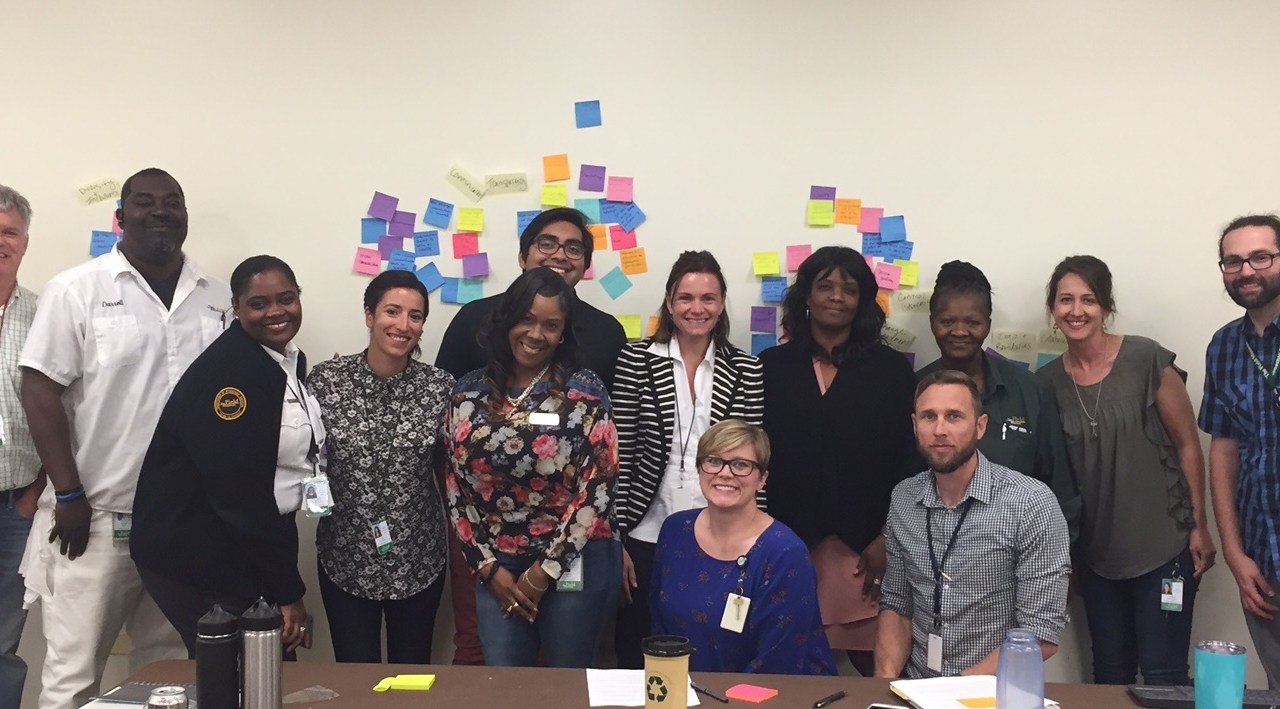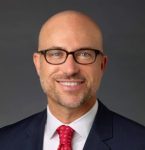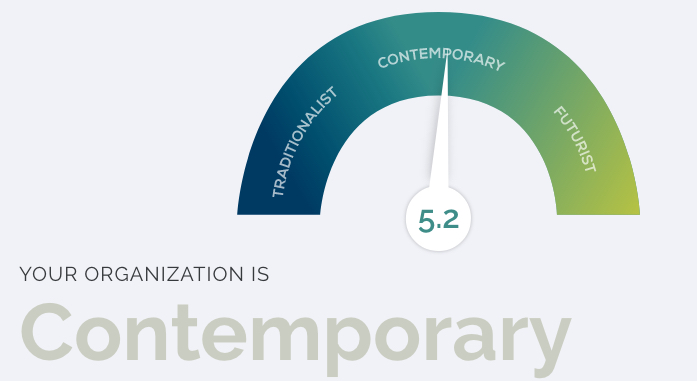
Shawn VanDerziel is the Chief Human Resources Officer at The Field Museum in Chicago. This is the second in a series we’ll be presenting that discusses the Field Museum’s staff culture and engagement initiative.

Are we ready to hear the hard truths from our employees? What workplace dynamics lead our success? What workplace nuances are getting in our way? These are some of the big questions we are asking ourselves at The Field Museum as we take a journey of self-discovery and become deliberate in our workplace culture outcomes.
In April, I published a blog post entitled, Workplace Culture – Let’s talk about it! providing background about the culture assessment and alignment project we have engaged in. I’ll use this post to update you on our progress and hopefully provide you with additional food for thought.
The Culture Committee
In March, our 500 staff members were asked to complete a survey designed by WorkXO. While the survey was completely anonymous, there were identifiers associated with each respondent. This allowed us to segregate answers by type of employee (ex. Management responses vs. non-management), ethnicity, gender, generations (ex. millennial vs. baby boomer), department, and other identifiers.
At the same time, we began to assemble a team that would be responsible for interpreting the data we would receive and then make recommendations based on that data. We worked with Museum executives and department heads to identify individuals who would be representatives from their functional areas. We weren’t looking for people to represent every department, but rather individuals that have good insights and exemplify a contingency of other employees. This included: employees that are diverse (age, race, etc.), front line staff, entry level professional staff, senior individual contributors, managers, directors, employees with various lengths of service, etc. It was also important to us to select individuals that have a track record of being good Museum “citizens”, those that would speak freely and share their opinion, people that would challenge us and would work well in a team. Ultimately, we crafted a team of 15 employees to serve on our Culture Committee.

The Culture Committee is key to interpreting the data we received from our employees to make it useful and actionable. We provided the Culture Committee with a charter to be clear on our mission and goals. We held an orientation to discuss our goals and provided the committee with a detailed overview of the results of our survey and an opportunity to dive deeper into the data if they wished. More about the Culture Committee later.
The Culture Assessment
63% (or just over 300 of our employees) completed the survey with 64 questions related to our workplace culture. Based on the answers to those questions, WorkXO provided us with preliminary interpretation of what the results may mean for us. As a total composite, the data was able to plot us on a continuum to show how evolved our workplace culture is. The continuum on a scale of 1-10 shows how traditional (1-5), contemporary (5.1-7.5) or futurist (7.5-10) our organization is. In our case, overall we leaned towards contemporary management practices that drive our workplace culture. This means that we have evolved our management practices to move beyond traditional practices of the 20th century, but have not pushed the envelope to be aligned with what we are now seeing as the “future of work.”
Surprisingly, there were virtually no generational differences in the responses. Given all of the news reports and analysis over millennials, we assumed we would find gaps in how this group feels about our culture in general. We did not find that at all. The biggest differences with demographics were by department/work group and by years of service. It is clear that depending on the responsibilities our employees hold; they will experience our culture differently. We have subcultures – some of the differences were quite stark. While this was all very important, we found that working with the overall, top level data provided the most critical information about our culture. And we needed to start there.
The Insights
As we dive deeper into the individual questions and responses it becomes clear that there are obstacles to reaching our full potential because we are stuck in traditional ways of managing our organizational culture. There were also many items where we lean towards futurist practices. But by and large, the majority of our practices indicate we are traditional to contemporary. For those items that leaned towards traditional or contemporary practices, we are evaluating those to determine if there are valid reasons for this or if the practices are posing obstacles for us. In preliminary interpretation, many of them are obstacles and challenges that we will want to overcome to maximize our success going forward.
We leaned towards more traditional practices on topics like: how we manage change, boundaries and silos that have been created, our communication platforms, how we keep egos in check, how we test new ideas, investing in competitive technology, leveraging technology in our jobs, how we manage conflict and being forthcoming about hard truths.
On the opposite end of the spectrum we learned that we were more contemporary, even leaning towards futurist on topics like: sharing the workload and working as a team to pitch in, leveraging relationships, how passionate and clear we are on our purpose, feeling as though we are contributing to the greater good and we are inspired by each other and what we do, our diversity as a staff, our authenticity, acceptance of each other, and an individual’s ability to take ownership of an outcome.
All of this is relative and particular to our organization. Our employees have expectations of us as a workplace. We are a world-class natural history museum and our employees believe we should have a workplace culture that matches our reputation. The perceptions of our employees may not match that of an outsider looking in. However, our employee’s perceptions are their realities and they are responsible for our success, therefore, we need to listen carefully.
The Culture Priorities
Our Culture Committee has engaged in a number of exercises to tease out the data and generate discussion around the current state of our workplace culture. We then were able to begin the process of prioritizing the items that we believe are most important to our culture if we want to be purposeful in driving our success. This has led us to our current state where we have identified six cultural priorities. We are working to further define those priorities to produce a clear path to where we would like our culture to be. Some of the items are practices we believe we need to improve or overcome as a culture (such as distractions or bad habits) and others are practices that we want to strengthen that we don’t want to lose. The idea is that we want to be intentional and clear about what kind of Museum we want to be from a workplace culture perspective and to illustrate how our culture will shape our future successes.
What Comes Next?
We have a lot of work ahead of us. There are many more steps to come. Once we finish defining our six cultural priorities, we will begin working on a playbook to provide specific examples for how we plan to shape our culture through various tactics and practices as individuals (or as an organization).
Communicating all of this information and getting buy-in across the organization will be critical as we proceed. A roll-out plan and broad input will be built into our process. Vitally important is keeping the executive management team of the Museum informed along our journey – we don’t want them to be surprised. We will need support from them (from the top) and will need them to model our priorities. We have had one all staff meeting where we have explained the high-level results of the survey and plan to do much more as the committee reaches more milestones in the process (they will also seek more input from their colleagues).
Workplace culture evolution is not one person’s or one group’s responsibility. It takes the entire organization and each person’s attention. The first step is to get everyone on the same page, in agreement on what is important, what drives our success, how we should work together and how we should treat each other. We are excited to see where this journey leads us and look forward to sharing the lessons we learn.
ABOUT THE AUTHOR
Shawn manages the day-to-day operations of the Human Resources department that serves over 500 staff, 600 volunteers and 200 interns. In addition to his responsibilities as the head of human resources, he serves as the Museum’s Chief of Staff. In this capacity he works closely with the President and executive staff to align strategies and manage the Museum’s Board of Trustees; organizing their quarterly meetings, managing communications and serving as liaison to the executive and governance/nominations committees. Shawn began his career with The Field Museum in July 1997; he became a Vice President in 2006 and has served as Chief Human Resources Officer since 2013. During his career at The Field Museum, he has overseen various departments and functions, including Information Technology, Web, Communications and Marketing, Protection Services, Mailroom and Printshop, Library and Education.









Thanks for this. A critically important issue for our museums.
Thank you for posting. Very interesting.
This is a wonderful article, and so important. Thank you Shawn!